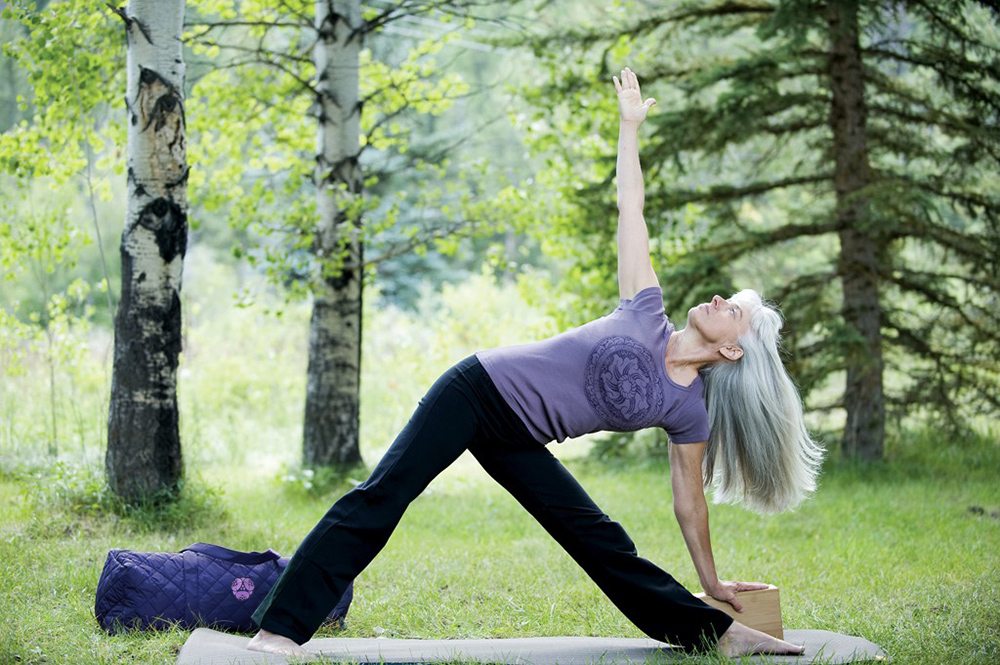
You’d think it would be easy. Yoga props, such as yoga blocks and straps, increase the ease in so many poses. Yet, in this competitive culture, many people have come to think of yoga props as “crutches” for other people, you know, the ones who just can’t do the “full” pose.
To be sure, yoga props can level the field. Especially in standing poses—think Trikonasana (Triangle Pose)—a well-placed yoga block can help less flexible people maintain structural integrity. Using a yoga strap in seated forward bends can allow anyone to connect hands with feet without sacrificing the health of the spine.
But yoga props can also benefit flexible people. For example, in Triangle Pose, flexible students will often collapse into their joints when they place their bottom hand on the floor—because they can. Raising a flexible student up by placing a block under their bottom hand can help them stabilize their joints. It’s all about balance, after all. Hypermobile students need stability as much as stiff students benefit from flexibility.
Yoga Props for Everyone
But how do you convince everyone to embrace yoga props in their practice? Here’s what I’ve learned:
Start by introducing poses that benefit from everyone using yoga props. When you single out the less flexible people time after time, students will develop a stigma around using props. Here are three poses that require yoga props for everyone in your class:
- Talasana (Palm Tree Pose) with a yoga strap
- Supported Matsyasana (Fish Pose) with yoga blocks: This is the pose that first motivated me to buy blocks of my own. Pretty much everyone can benefit from passively expanding the chest and shoulder joints.
- Supta Padangusthasana (Supine Leg Stretch Pose): Using a strap is beneficial for pretty much every practitioner in this series. Even if flexible people can easily grab the foot of the extended leg with their hands, it’s often not without sacrificing the alignment of the rest of the body.
Instruct everyone to get a block or a strap in other poses too. When you say, “Everyone, get a block,” there’s no stigma around who’s using yoga props and who isn’t. Have everyone, including flexible people, try these poses using blocks and straps for extra support:
- Prasarita Padottanasana (Wide-Legged Forward Bend): In this pose, have everyone place blocks under their hands so that their torsos are parallel to the floor. This will create more breathing space for everyone, including flexible folks.
- Janu Sirsasana (Head-of-the-Knee Pose): Connecting hand to foot with a strap in this seated forward bend creates a dynamic connection that lengthens the spine and engages the core. You can use a strap this way in Paschimottanasana (Seated Forward Bend) as well.
Finally, remind your students that the goal is not to experience extreme sensation. The intention of asana practice is to find that sweet spot between stability and flexibility. Asana practice is meant to make the body a peaceful environment for the mind. Using yoga props, no matter how strong or flexible you are, can help you find perfect balance.
